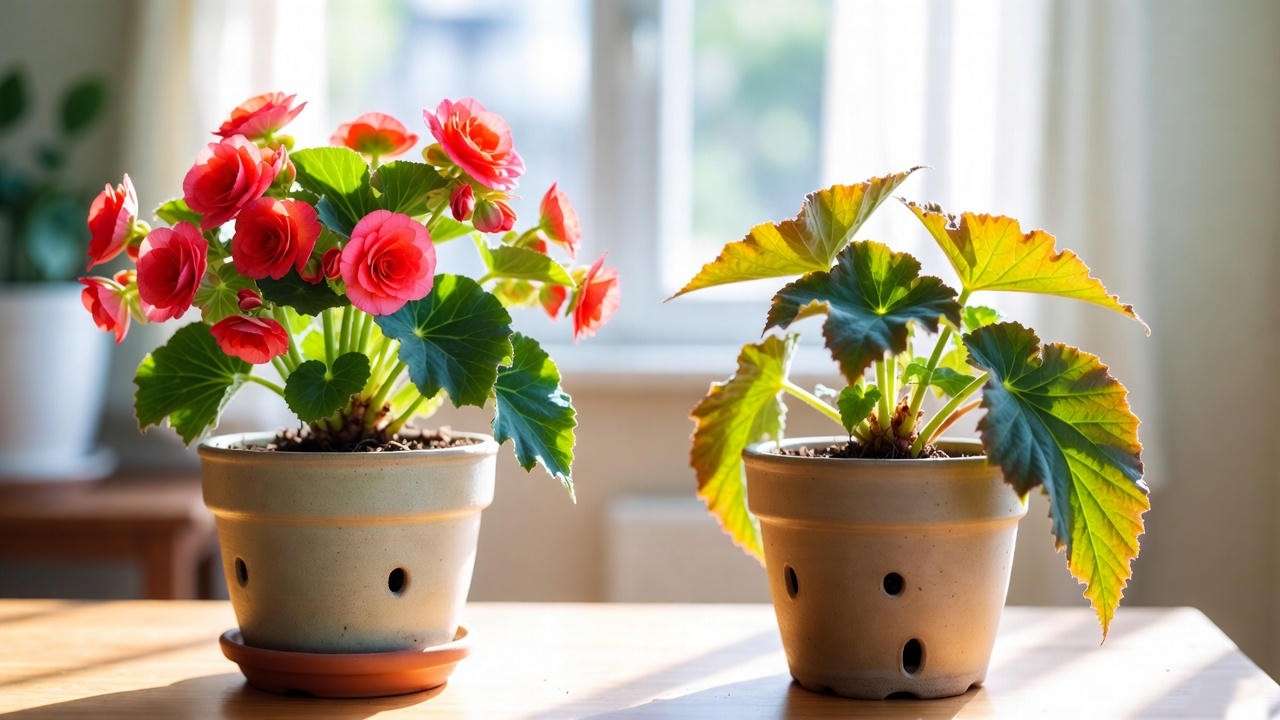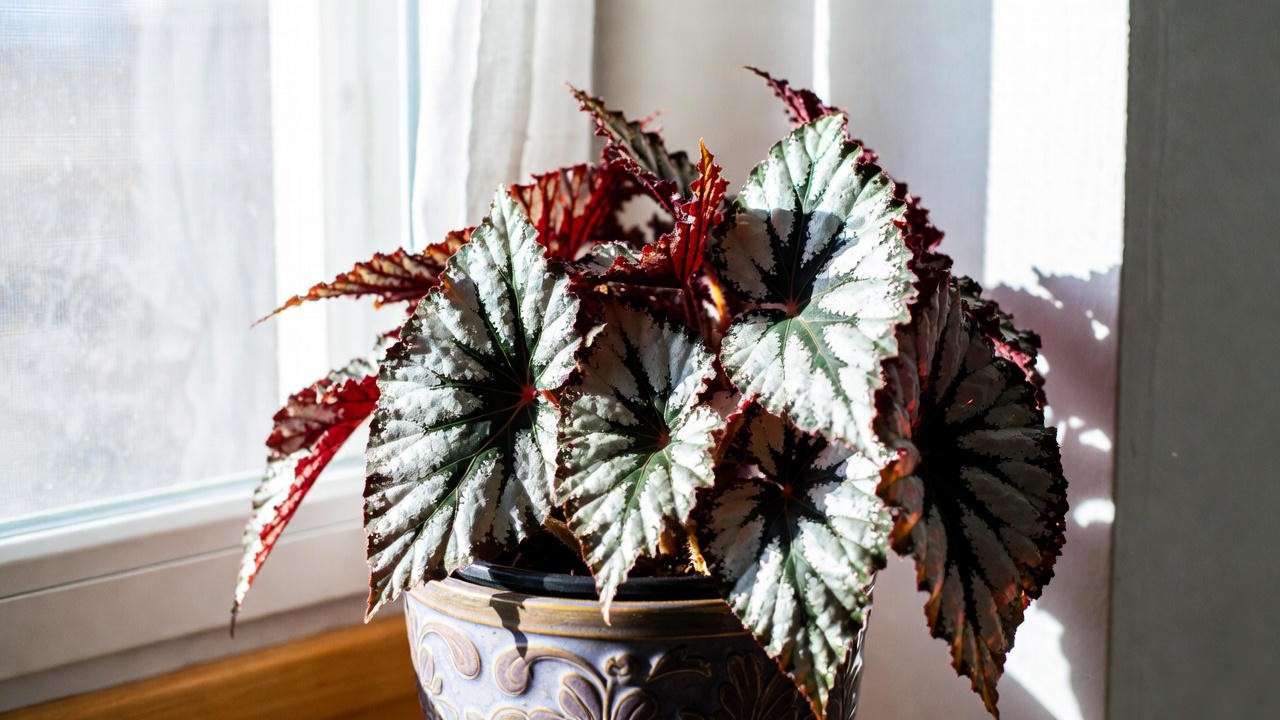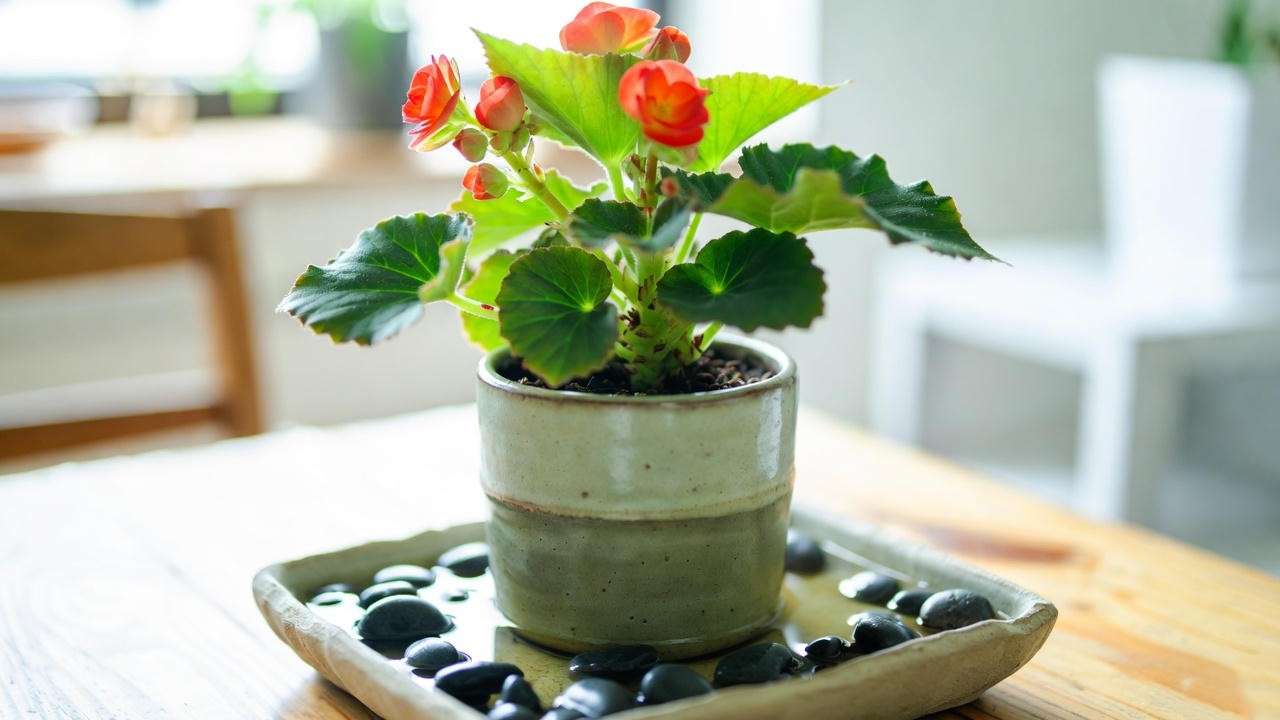Has your once-vibrant begonia plant started showing yellow leaves, leaving you worried about its health? Don’t panic! Yellowing leaves are a common issue for begonia plants, but with the right knowledge, you can diagnose the problem and restore your plant’s lush beauty. As a horticulturist with over 20 years of experience nurturing indoor and outdoor plants, I’ve seen countless begonias bounce back from yellowing leaves with proper care. In this comprehensive guide, we’ll explore why your begonia plant yellow leaves appear, pinpoint the root causes, and share seven expert tips to revive your plant. Whether you’re a beginner or a seasoned plant parent, these actionable solutions will help you keep your begonia thriving. Let’s dive in and bring your blooms back to life! 🌸
Understanding Begonia Plants: A Quick Primer 🌸
What Makes Begonias Special?
Begonias are beloved for their stunning foliage and vibrant flowers, making them a favorite among houseplant enthusiasts. With over 1,800 species, including wax begonias, tuberous begonias, and rex begonias, these plants offer endless variety. Their lush leaves and colorful blooms thrive in the right conditions, but they’re also sensitive to care mistakes. Yellowing leaves often signal that something’s off—whether it’s water, light, or nutrients. Understanding your begonia’s unique needs is the first step to preventing and fixing yellow leaves.
Common Causes of Yellow Leaves in Begonias
Yellow leaves can stem from several issues: overwatering, underwatering, poor lighting, nutrient deficiencies, pests, diseases, or environmental stress. Each cause has distinct symptoms, and misdiagnosing the problem can worsen your plant’s health. In the next section, we’ll break down these causes in detail to help you identify what’s affecting your begonia.
Why Are Your Begonia’s Leaves Turning Yellow? 🔍
Overwatering: The #1 Culprit 💧
Overwatering is the most common reason for yellow leaves on begonias. These plants prefer moist but well-draining soil, and too much water can suffocate roots, leading to root rot. Signs include yellow, wilting leaves, soggy soil, or mushy stems. To check for overwatering, insert your finger 1-2 inches into the soil. If it feels wet, hold off on watering. A moisture meter can also provide accurate readings. Expert Tip: Always use pots with drainage holes to prevent water buildup.

Underwatering: Are You Starving Your Begonia? 🏜️
On the flip side, underwatering can also cause yellow leaves. Dry, crispy leaves or drooping stems indicate your begonia is thirsty. Inconsistent watering stresses the plant, weakening its ability to absorb nutrients. For example, I once revived a client’s wax begonia that had yellowed from neglect by establishing a consistent watering schedule. Check soil weekly and water when the top inch feels dry.
Poor Lighting Conditions ☀️
Begonias thrive in bright, indirect light, but too much or too little can trigger yellowing. Direct sunlight scorches leaves, while low light causes them to fade and yellow. Rex begonias, for instance, need filtered light to maintain their vibrant patterns. Pro Insight: Adjust light exposure seasonally—move plants away from south-facing windows in summer and closer in winter.
Nutrient Deficiencies: Is Your Begonia Hungry? 🌱
Yellow leaves can signal nutrient deficiencies, particularly nitrogen or potassium. Nitrogen deficiency causes older leaves to yellow, while potassium issues affect leaf edges. A balanced, water-soluble fertilizer (e.g., 10-10-10) applied every 4-6 weeks during the growing season can help. Actionable Tip: Dilute fertilizer to half-strength to avoid overfeeding, which can burn roots.
Pests and Diseases: Hidden Threats 🐞
Pests like spider mites, aphids, or mealybugs can sap your begonia’s vitality, causing yellowing leaves. Check the undersides of leaves for tiny webs or sticky residue. Diseases like powdery mildew or fungal infections also contribute. Expert Advice: Use neem oil for organic pest control, but test on a small area first to avoid leaf damage.
Environmental Stress: Temperature and Humidity 🌡️
Begonias prefer temperatures between 65-75°F and humidity levels of 50-60%. Low humidity or sudden temperature changes (e.g., drafts from air conditioners) can stress the plant, leading to yellow leaves. Quick Fix: Place a pebble tray filled with water near your begonia to boost humidity naturally.
Natural Aging: Is It Normal? 🍂
Sometimes, yellow leaves are just part of a begonia’s natural aging process. Older leaves at the base may yellow and drop as the plant focuses energy on new growth. If only a few lower leaves are affected and the rest of the plant looks healthy, this is likely normal. Pro Tip: Remove aging leaves to keep your plant tidy and encourage new growth.
7 Expert Tips to Revive Your Begonia Plant 🌟
Tip 1: Perfect Your Watering Routine 💦
To revive a yellowing begonia, start with watering. Water thoroughly when the top inch of soil feels dry, ensuring excess water drains out. For most begonias, this means watering every 7-10 days, depending on your climate. Checklist:
- Use room-temperature water to avoid shocking roots.
- Check drainage holes to prevent waterlogging.
- Water less in winter when growth slows.

Tip 2: Optimize Lighting for Vibrant Growth ☀️
Place your begonia in bright, indirect light—think east-facing windows or shaded south-facing spots. If natural light is limited, consider a grow light with 12-14 hours of daily exposure. DIY Tip: Create a light diffuser using sheer curtains to soften harsh sunlight. Rotate your plant every few weeks to ensure even light exposure.

Tip 3: Feed Your Begonia the Right Nutrients 🌿
Feed your begonia a balanced liquid fertilizer (e.g., 10-10-10 or 20-20-20) every 4-6 weeks during spring and summer. Avoid fertilizing in fall and winter when growth slows. Product Recommendation: Try Miracle-Gro Indoor Plant Food or Espoma Organic Indoor Plant Food for reliable results. Always dilute to prevent nutrient burn.
Tip 4: Boost Humidity for Tropical Bliss 💧
Begonias are tropical plants that crave humidity. Increase humidity with a humidifier, misting, or a pebble tray filled with water. Grouping plants together also creates a humid microclimate. Budget Hack: Place a shallow tray of pebbles and water beneath your pot for a low-cost humidity boost. Aim for 50-60% humidity for optimal health.

Tip 5: Protect Against Pests and Diseases 🛡️
Inspect your begonia weekly for pests or diseases. If you spot spider mites or aphids, wipe leaves with a damp cloth and apply neem oil or insecticidal soap. For fungal issues like powdery mildew, improve air circulation and reduce watering. Expert Insight: Isolate affected plants to prevent pests from spreading to other houseplants.
Tip 6: Maintain Ideal Temperatures 🌡️
Keep your begonia in a stable environment between 65-75°F. Avoid placing it near drafty windows, air vents, or heaters. Pro Tip: Use a digital thermometer to monitor your plant’s microclimate, especially during seasonal transitions. If temperatures drop below 60°F, consider a heat mat for indoor plants.
Tip 7: Prune and Refresh for New Growth ✂️
Pruning yellow leaves encourages new growth and improves plant appearance. Use clean, sharp scissors to remove yellow or damaged leaves at the base. For tuberous begonias, cut back leggy stems to promote bushier growth. Visual Guide: Before pruning, take a photo to track progress—after pruning, your begonia should look tidier and healthier within weeks.

Preventing Yellow Leaves: Long-Term Care Strategies 🛠️
Building a Consistent Care Routine 📅
Preventing yellow leaves starts with a consistent care routine tailored to your begonia’s needs. Check your plant weekly for signs of stress, such as wilting or discoloration, and adjust care accordingly. A simple routine includes:
- Watering: Water when the top inch of soil is dry, typically every 7-10 days.
- Light Check: Ensure your begonia gets 12-14 hours of bright, indirect light daily.
- Humidity Monitoring: Maintain 50-60% humidity with a hygrometer for accuracy.
- Fertilizing: Feed every 4-6 weeks during the growing season (spring and summer). By sticking to a schedule, you’ll catch potential issues early and keep your begonia healthy. Expert Tip: Use a plant care app or journal to track watering and fertilizing dates for consistency.
Choosing the Right Soil and Pot 🪴
Begonias thrive in well-draining, slightly acidic soil with a pH of 5.5-6.5. A mix of peat moss, perlite, and potting soil works well to ensure drainage and aeration. Avoid heavy, clay-based soils that retain too much water. Pot size is equally important—choose a pot with drainage holes that’s only 1-2 inches larger than the root ball to prevent overwatering. Expert Recommendation: Try FoxFarm Ocean Forest Potting Soil or a custom mix of 50% peat moss, 30% perlite, and 20% compost for optimal results. Repot every 1-2 years to refresh the soil and prevent nutrient depletion.
Seasonal Care Adjustments 🍁
Begonias require different care depending on the season. In spring and summer, increase watering and fertilizing to support active growth. In fall and winter, reduce watering and stop fertilizing as the plant enters dormancy. Protect indoor begonias from cold drafts near windows during winter, and move outdoor plants to a sheltered spot if temperatures drop below 60°F. Pro Tip: If you notice slower growth in winter, don’t panic—it’s normal for begonias to rest. Adjust light exposure as days shorten by moving plants closer to windows or supplementing with a grow light.
FAQs: Your Begonia Questions Answered ❓
Q1: Can yellow leaves turn green again?
No, once begonia leaves turn yellow, they typically won’t revert to green. Yellowing indicates damage or nutrient loss, so focus on removing affected leaves and addressing the underlying cause to encourage healthy new growth.
Q2: How often should I water my begonia?
Water when the top inch of soil feels dry, usually every 7-10 days. Factors like humidity, pot size, and season affect frequency, so always check the soil before watering.
Q3: Are begonias safe for pets?
Begonias are toxic to cats and dogs if ingested, causing symptoms like vomiting or drooling. Keep them out of reach of pets or opt for pet-safe plants like spider plants.
Q4: What’s the best fertilizer for begonias?
A balanced, water-soluble fertilizer like 10-10-10 or 20-20-20 works well. Apply every 4-6 weeks during spring and summer, diluted to half-strength to avoid root burn.
Q5: Why are my begonia’s leaves yellowing only on one side?
Yellowing on one side often indicates uneven light exposure or localized pest damage. Rotate your plant regularly for even light, and inspect for pests like spider mites.
Conclusion: Keep Your Begonia Thriving! 🌺
Yellow leaves on your begonia don’t have to spell disaster. By diagnosing the cause—whether it’s overwatering, poor lighting, nutrient deficiencies, pests, or environmental stress—you can take targeted steps to revive your plant. Follow the seven expert tips outlined above: perfect your watering routine, optimize light, feed appropriately, boost humidity, protect against pests, maintain stable temperatures, and prune for new growth. With consistent care and the right soil, pot, and seasonal adjustments, your begonia will flourish with vibrant leaves and blooms. Drawing on decades of horticultural experience and feedback from plant care communities, these strategies are designed to help both novice and experienced growers succeed. Ready to see your begonia thrive? Try these tips today and share your success story in the comments below! 🌱













